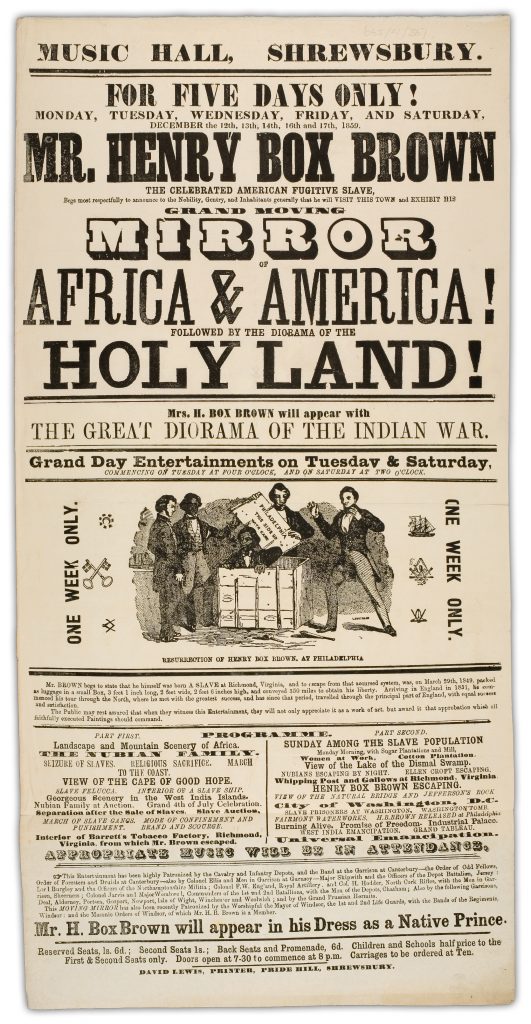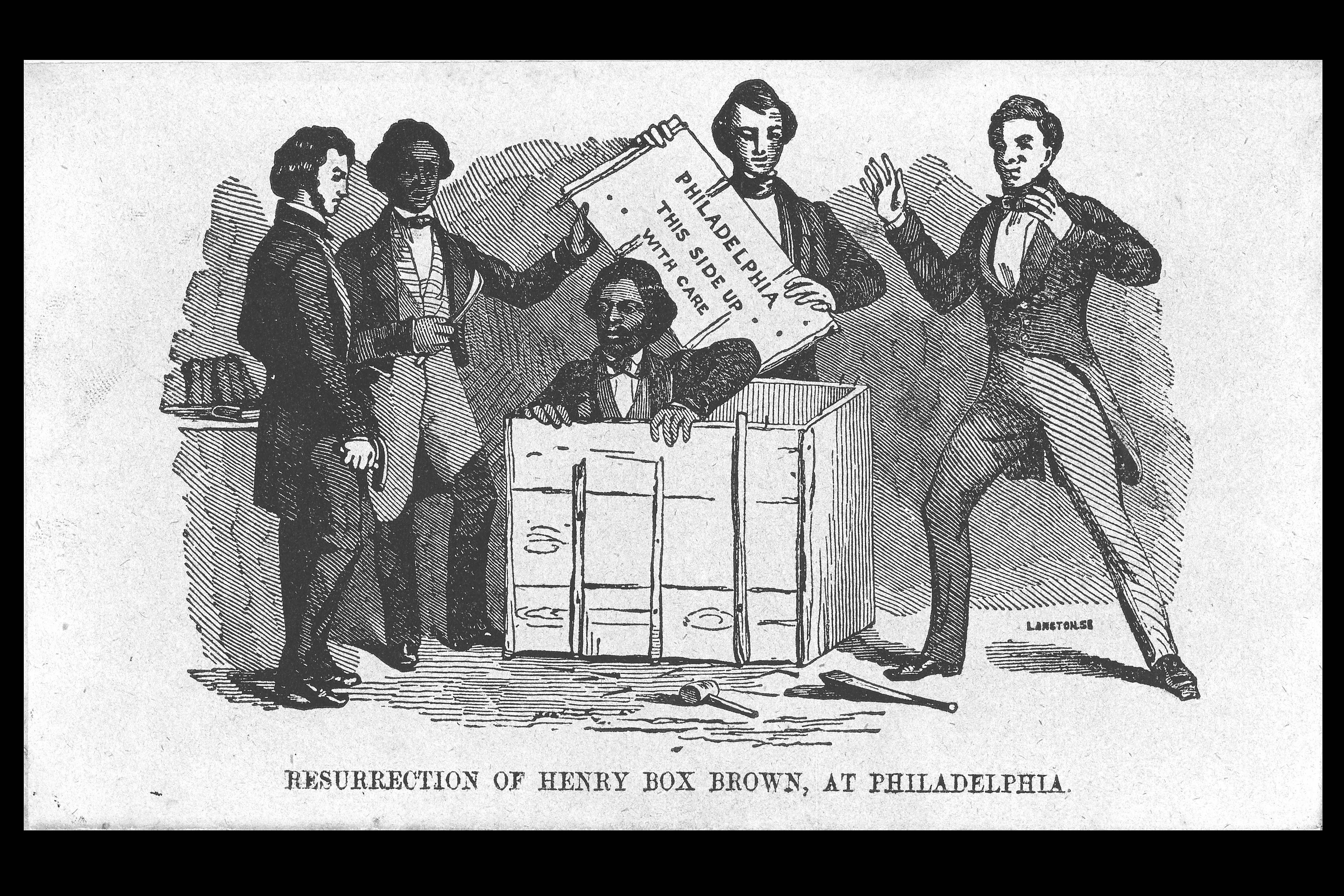In March 1849, a slave in his mid-thirties paid $86 of his saved tobacconist money to ship a 3-foot by 2-foot crate from his master’s home in Richmond, Virginia, to Philadelphia. The box was lined with coarse woolen cloth, contained a small hole on one side, and traveled by wagon, railroad, and steamboat.
Twenty-seven hours later, when abolitionist Passmore Williamson and the rest of the Philadelphia Vigilance Committee received the box at Williams’s office, the slave himself jumped out, reportedly said, “How do you do, gentlemen?” and broke into song.
The tale of Henry Box Brown has delighted and mystified Americans for more than 150 years. A true revolutionary, Brown didn’t fit the contemporaneous mold of an emancipated slave. He spent his free life performing, re-enacting his escape, and creating spectacle shows of magic and hypnotism that amused fans and alarmed critics, including storied abolitionists of the time.
Now, professor of English and Africana studies Martha Cutter will delve into the life and performance of this storied man with a 2019 National Endowment for the Humanities grant. She will use the $60,000 award, titled “The Lives and Afterlives of Henry Box Brown, the Slave Who Mailed Himself to Freedom,” to investigate the life of the man who, as she writes, “disrespected boundaries, not only between free and enslaved, but between high art and low.”
Her work will culminate in the first comprehensive assessment of Brown’s unique persona and his impact on the anti-slavery movement. She will also analyze what she terms the “afterlife” of Brown – his representation by contemporary African American artists such as Glen Ligon, Wilmer Wilson, and Pat Ward Williams.
Since publishing an article in 2015, titled “Will the Real Henry ‘Box’ Brown Please Stand Up?”, Cutter says she’s been contacted nearly weekly by individuals interested in Brown, from artists and filmmakers to historians and journalists, and even magicians. The article revealed, based on Cutter’s research, new information about Brown, including how he learned magic – from a fellow slave – and where he passed away: Toronto.
“He is such a fascinating figure, yet no one has truly evaluated his whole life, let alone his performative legacy and the ways former slaves handle the individual materials of slavery,” says Cutter.
After his dramatic emancipation, Brown became a speaker in the North, where he first received the nickname “Box” at the Anti-Slavery Society and met noted abolitionist and former slave Frederick Douglass. While campaigning against slavery, he developed a panorama – large art scrolls that he would unfurl – to support his speeches and story. Upon the passage of the Fugitive Slave Act in 1850, he moved to England for safety.

Minstrel shows were the rage in Britain, notes Cutter, and Brown began developing a show of his own, blending panoramas, magic, and plays, in which he called himself such names as “Prof. H. Box Brown” and “The African Prince.” In later years, he experimented with so-called electrobiology, a form of hypnotism.
But nearly every performance included the dramatic flourish in which he re-enacted his emergence from what he claimed was the original box in which he was shipped.
Cutter highly doubts that the box was the real thing. But that was classic Brown, she says: always in it for a spectacle. He toured England for nearly 25 years, performing hundreds of shows a year; he even acted in semi-autobiographical plays on stages in London and Margate. Cutter’s research under the new grant will take her to the Theatre and Performance Collections at the Victoria and Albert Museum in London to investigate their artifacts.
Brown’s public image didn’t go over well with prominent anti-slavery figures of the time. Douglass publicly denounced Brown’s 1849 book, Narrative of the Life of Henry Box Brown, in which he described the means of his escape, because Douglass wished he had kept it secret so others could be freed that way. He also looked down upon Brown’s elaborate shows, says Cutter.
“Douglass was dignified, serious – he didn’t smile in portraits or photographs,” because he felt people would ridicule African Americans if they weren’t seen as serious, says Cutter.
“There are heroes, like Douglass and Uncle Tom from Uncle Tom’s Cabin, that people know and associate with emancipation – Brown was different from them,” says Cutter. “He’s the anti-Uncle Tom.”
Cutter’s forthcoming book, provisionally titled “Slavery as Spectacle: The Lives and Afterlives of Henry Box Brown,” will help to fill the gaps in Brown’s life and feed the public interest in his legacy, she says. It will examine both a little-studied method for anti-slavery activism, namely, Brown’s performances; and will bring to life the artistic endeavors of one of the most enigmatic figures of abolitionist history.
“Brown wrote himself out of abolitionist history, at least in part,” Cutter writes, “but inscribed himself into a longer history of artists who use their work to deconstruct the boundary between the viewer and the viewed.”
Previous funding for this project was provided by a $10,000 Research Excellence Program award from the Office of the Vice President for Research.



